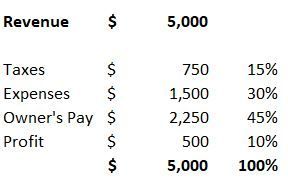Client Success Manager Job Description
100 Degrees Consulting is seeking an experienced and enthusiastic Customer Success Manager to join the team. The CSM will guide clients through the sales process into the support phase to ensure they’re receiving the tools and support needed to achieve their goals. This role will express and embody 100 Degrees Consulting’s mission, vision and values and how we work as a company. The CSM will be a liaison between the client and the client success team to ensure both sides are in alignment with each other.
- Responsible for cultivating and maintaining client relationships
- Implement and maintain procedures that improve the client’s experience
- Plan and leads regular check-ins with clients
- Leads client gifting and appreciation initiatives
- Manages team capacity and resource planning
- Work to identify and/or develop upsell opportunities
- Creates referral program and consistently asks current and past clients for referrals
- Manages entire process from sales call through onboarding and relationship management
- Takes proactive steps to help clients achieve their goals and minimize client attrition
- Serves as a collaborative partner between leadership, team, and clients
- Handles conflict resolution with clients when needed; communicates directly and empathetically
- Handles CFO and bookkeeping overflow work and projects
Job Requirements
- Bachelor’s degree and 3+ years of experience in a customer-facing role, such as Customer Success, Customer Support or Account Management
- Experience working with senior and executive level clients
- Accounting Experience
- Extreme attention to detail
- Are a skilled, professional writer and communicator
- Available to respond to team communication and take meetings during regular business hours in the US
- Have your own computer, mobile phone, and internet access
- Maintain a workspace free of unnecessary distraction where client and internal calls may be taken in a professional manner
- Able to be on video chat for scheduled meetings
- Experience with the following systems:
- Dubsado
- Google Workspace
- Asana
- Slack
- Zoom
- QuickBooks Online
Qualities We’re Looking For
- Thrive in a fast-paced environment
- Organized and detail-oriented under pressure
- Creative and strategic thinker
- Hate being late and never miss a deadline
- Communicate proactively with questions and updates
- Hardworking, highly self-motivated, and a quick learner
- Proactive, willing to learn new things and energized to grow in your role
- Great sense of humor, high-energy, and enthusiasm for working on a small and growing team
Benefits
- Compensation is competitive and commensurate with experience
- The position will start as part-time with the opportunity to grow into full-time.
- We offer a flexible, remote work environment
How To Apply
- Send a cover letter explaining why you think we’re a good fit and your resume to hello@100degreesconsulting.com.
- Applications without a cover letter will not be considered.
- Please include “Client Success Manager” in the subject line.
- Deadline to apply is September 30th, 2021
About 100 Degrees Consulting
100 Degrees Consulting provides CFO and bookkeeping services to visionary leaders. We help nonprofit organizations and entrepreneurs globally on all things finance; accounting, bookkeeping, audit, board reporting, financial analysis, budgeting, cash flow, 990s, and compliance. We give leaders clarity and confidence in their numbers so they can make a bigger impact on the world.
We serve our clients with knowledge & expertise, passion for their mission, dependability, and approachability. We have high standards, high expectations, and we move quickly. We have extraordinary capacity and expect the same from everyone on the team. Most importantly, we love what we do and who we serve.
We are an equal opportunity employer, and you would be joining a small, diverse team. We believe that diversity is an asset and inclusion is non-negotiable, so please only apply if you share those values.
























